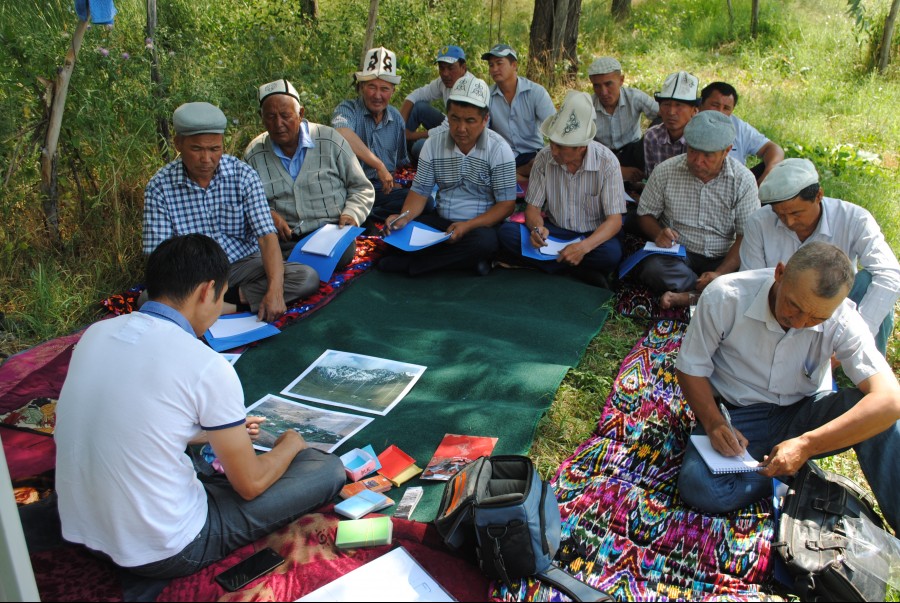
An analysis of conflicts showed that their main cause is the double payment for land use, which is collected by both the pasture committee and the forestry. This was stated by 27% of the interviewed pasture committee members. 20% of the disagreements are related to grazing of other people's livestock on the territory of aiyl aimaks. This happens because there is no network of developed pasture infrastructure in aiyl districts. Shepherds have to graze their cattle in neighbouring aimags where there is a watering point or a bridge across which they can take their cattle to pasture.
Pasture conditions were monitored at 120 selected sites. Twice a year at these sites the project team together with representatives of the pasture committees assessed the sites to develop mapping data, which was then used in the pasture management plans. On the basis of the data collected, a map of biomass, both consumptive and total for the whole country, was drawn up.
Based on the results of the conflict analysis and pasture condition monitoring, the communities developed integrated pasture management plans. These documents included conflict mitigation measures involving the construction and repair of pasture infrastructure. Each pasture committee received funds for this purpose, with which 39 watering points and 5 veterinary posts were installed in the project area, 9 bridges were built and repaired and haying areas were fenced.